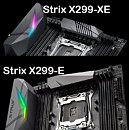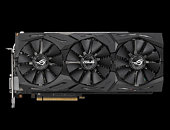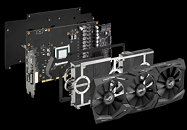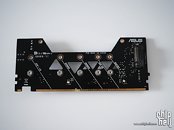
ASUS Republic of Gamers Announces the Strix GL503 and GL703 Gaming Laptops
ASUS Republic of Gamers (ROG) today announced Strix GL503 and Strix GL703, a pair of advanced 15.6-inch and 17.3-inch gaming laptops powered by up to the latest 8th Generation Intel Core processors and NVIDIA GeForce GTX 10-Series graphics. Designed for esports, GL503 and GL703 feature the patented Anti-Dust Cooling (ADC) system to cope with the grueling demands of gaming marathons, while ASUS Aura Sync lighting lets gamers customize and sync the colors of their gaming setup. These slim and lightweight laptops have an eye-catching design with a black brushed-finish aluminum lid incorporating an illuminated ROG logo, and deep-red thermal fins.
Desktop-grade firepower to go
GL503 and GL703 provide desktop-grade firepower in a compact and lightweight chassis that's barely an inch thick. They are powered by up to the latest 8th Generation Intel Core i7 quad-core processors that provide 23% more performance than the previous generation, and can be specified with up to 32GB of dual-channel DDR4 SDRAM to allow gamers to play games, stream videos, and surf the net simultaneously.
Desktop-grade firepower to go
GL503 and GL703 provide desktop-grade firepower in a compact and lightweight chassis that's barely an inch thick. They are powered by up to the latest 8th Generation Intel Core i7 quad-core processors that provide 23% more performance than the previous generation, and can be specified with up to 32GB of dual-channel DDR4 SDRAM to allow gamers to play games, stream videos, and surf the net simultaneously.



























































































